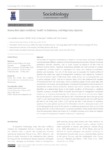Use este identificador para citar ou linkar para este item:
http://www.alice.cnptia.embrapa.br/alice/handle/doc/1072288Registro completo de metadados
| Campo DC | Valor | Idioma |
|---|---|---|
| dc.contributor.author | CESTARO, L. G. | pt_BR |
| dc.contributor.author | ALVES, M. L. T. M. F | pt_BR |
| dc.contributor.author | MESSAGE, D. | pt_BR |
| dc.contributor.author | SILVA, M. V. G. B. | pt_BR |
| dc.contributor.author | TEIXEIRA, E. W. | pt_BR |
| dc.date.accessioned | 2017-07-07T11:11:11Z | pt_BR |
| dc.date.available | 2017-07-07T11:11:11Z | pt_BR |
| dc.date.created | 2017-07-07 | pt_BR |
| dc.date.issued | 2017 | pt_BR |
| dc.identifier.citation | Sociobiology, v. 64, n. 1, p. 42-49, 2017. | pt_BR |
| dc.identifier.uri | http://www.alice.cnptia.embrapa.br/alice/handle/doc/1072288 | pt_BR |
| dc.description | The practice of migratory beekeeping is based on moving honey bee (Apis mellifera) colonies between different locations to intensify agricultural production through improved pollination services. However, due to stress caused by exposure of bee hives to different environments, migratory beekeeping activities can lead colonies to greater susceptibility of these insects to pathogens and pests, thus leading to population decline and mortality. The aim of this study was to evaluate the health profile of apiaries that adopt two types of management (stationary and migratory), located in the central-eastern region of São Paulo state, Brazil, during two sampling periods, one in spring (October 2010), and one in autumn (May 2011). We collected 474 samples of honeycomb from the brood area, combs containing capped brood, adult bees that covered the brood area, and foraging bees, to evaluate the presence and prevalence of Paenibacillus larvae, Varroa destructor, Nosema apis and N. ceranae. Seasonality was identified as a determining factor in the health condition of Africanized A. mellifera colonies, causing a stronger effect on health than the type of management employed (stationary vs migratory beekeeping). The infection rates of N. ceranae were higher during the autumn in relation to the spring (387 ± 554 spores per bee in the spring and 1,167 ± 1,202 spores per bee in the autumn in stationary apiaries and 361 ± 687 spores per bee in the spring and 1,082 ± 1,277 spores per bee in the autumn in migratory apiaries). The same pattern was found for infestation rates of V. destructor (2.83 ± 1.97 in the spring and 9.48 ± 6.15 in the autumn in stationary apiaries and 3.25 ± 2.32 in the spring and 6.34 ± 6.58 in the autumn in migratory apiaries). These results demonstrate that the seasonality affects the health of A. mellifera colonies, but it does not depend on the type of management adopted (stationary or migratory). | pt_BR |
| dc.language.iso | eng | eng |
| dc.rights | openAccess | eng |
| dc.subject | Honey bee health | pt_BR |
| dc.subject | Nosema spp | pt_BR |
| dc.title | Honey bee (Apis mellifera) health in stationary and migratory apiaries. | pt_BR |
| dc.type | Artigo de periódico | pt_BR |
| dc.date.updated | 2017-07-07T11:11:11Z | pt_BR |
| dc.subject.thesagro | Apis Mellifera | pt_BR |
| dc.subject.nalthesaurus | Varroa destructor | pt_BR |
| dc.subject.nalthesaurus | Paenibacillus larvae | pt_BR |
| riaa.ainfo.id | 1072288 | pt_BR |
| riaa.ainfo.lastupdate | 2017-07-07 | pt_BR |
| dc.contributor.institution | Lubiane Guimarães Cestaro, UFV/VIÇOSA; M. L. T. M. F, Honey Bee Health Laboratory; D. Message, UFERSA; MARCOS VINICIUS GUALBERTO B SILVA, CNPGL; E. W. Teixeira, LASA. | pt_BR |
| Aparece nas coleções: | Artigo em periódico indexado (CNPGL)  | |
Arquivos associados a este item:
| Arquivo | Descrição | Tamanho | Formato | |
|---|---|---|---|---|
| Cnpgl2017SociobiolCestaroHoney.pdf | 498.2 kB | Adobe PDF |  Visualizar/Abrir |









